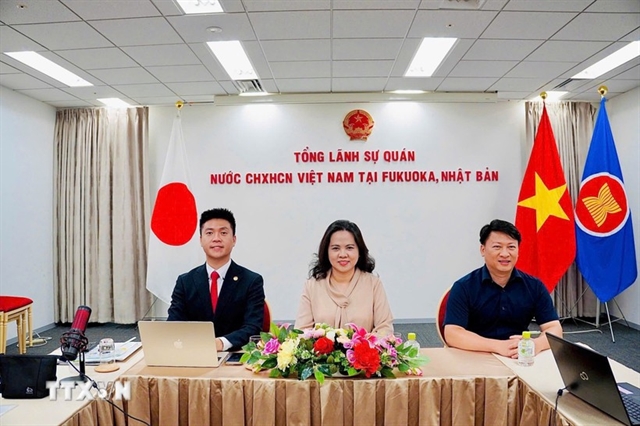 Economy
Economy

 |
| The ASEAN Conference on 5G takes place within the framework of the Việt Nam International Digital Week. — Photo hanoimoi.com.vn |
HÀ NỘI — In order to accelerate the implementation of 5G, managers and experts believe it is necessary to promote a regional roadmap and shared standards.
The ASEAN Conference on 5G took place within the framework of the Việt Nam International Digital Week, which is organised by the Ministry of Information and Communications in Hà Nội this week.
Speaking at the opening of the conference, Deputy Minister of Information and Communications Phan Tâm said that countries in the ASEAN region had 5G development strategies but were facing infrastructure and information security issues.
In particular, the issue of standards for 5G deployment played an important role. Therefore, the co-operation of ASEAN countries to build a 5G roadmap was one of the priority tasks and goals, he noted.
Speaking about 5G deployment, a representative from the Ministry of Internal Affairs and Communications of Japan - ASEAN's digital partner said that Japan had set a goal to develop its 5G network with the infrastructure construction covering 97 per cent of the population by 2025, equivalent to 300,000 5G base stations, and 99 per cent coverage by 2030, equivalent to 600,000 5G base stations.
To achieve this goal, Japan allocated frequencies to carriers to develop 5G technology in 2019, from which 5G networks flourished.
In addition, Japan also introduced tax exemption and reduction policies to promote companies to develop 5G services. 5G has helped airports deploy autonomous vehicles, solve the problem of labour shortages, or operate automatically to monitor containers at seaports.
In addition, in order to speed up the progress, Japan has opened the doors for many sources to participate in infrastructure construction, provided that safety and security are ensured.
In particular, Japan chose to deploy Open Ran technology, a mobile communication network architecture that allows networks to be integrated using network elements from many different manufacturers, helping to reduce equipment costs.
The representative of the Ministry of Internal Affairs and Communications of Japan said that promoting Open Ran would promote 5G deployment in ASEAN countries.
This is also the view that Lê Trường Giang, Director of the 5G Network Centre of Viettel Group, discussed at the conference.
The representative of Viettel said that the deployment of 5G in the world mainly follows two trends: Open Ran and Core.
In particular, Open Ran has a breakthrough with compatible devices from each vendor. Viettel uses the common hardware platform under Open Ran and participates in the Open Ran Radio Alliance.
Discussing the 5G trend, a Qualcomm representative said that it was necessary to build a mature ecosystem from low frequency to high frequency. Low frequency is used for smart factories. At that time, smart factories can not only apply for production lines but also operation and monitoring.
Earlier, in the opening speech of the Việt Nam International Digital Week event, Minister of Information and Communications Nguyễn Mạnh Hùng stated that 5G was a big push for humanity to move to a digital environment.
If digital technology is to be promoted, it needed digital infrastructure, which was 5G and cloud computing, he said.
ASEAN countries have held their annual 5G conference since 2019. ASEAN is committed to keeping pace with the world in new technologies.
“Digital co-operation among ASEAN countries is to create a digital ASEAN. To implement One ASEAN, digital transformation and digital cooperation are the best solutions,” said Hùng.
Việt Nam wished to sign digital partnership co-operation with ASEAN countries and other countries. Digital partnership collaboration was a new type of partnership, he noted. — VNS




